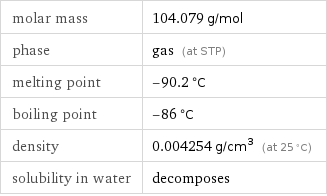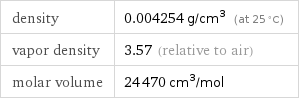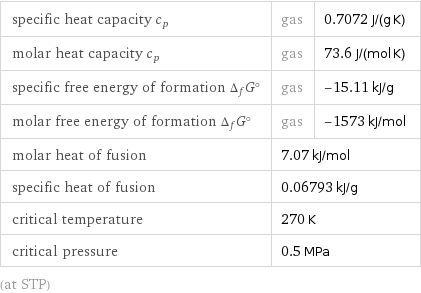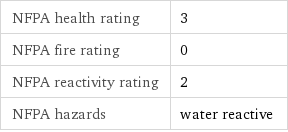Input interpretation

silicon tetrafluoride
Chemical names and formulas

formula | SiF_4 Hill formula | F_4Si name | silicon tetrafluoride IUPAC name | tetrafluorosilane alternate names | perfluorosilane | silicon fluoride | silicon(IV) fluoride | tetrafluorosilane mass fractions | F (fluorine) 73% | Si (silicon) 27%
Lewis structure

Draw the Lewis structure of silicon tetrafluoride. Start by drawing the overall structure of the molecule: Count the total valence electrons of the fluorine (n_F, val = 7) and silicon (n_Si, val = 4) atoms: 4 n_F, val + n_Si, val = 32 Calculate the number of electrons needed to completely fill the valence shells for fluorine (n_F, full = 8) and silicon (n_Si, full = 8): 4 n_F, full + n_Si, full = 40 Subtracting these two numbers shows that 40 - 32 = 8 bonding electrons are needed. Each bond has two electrons, so the above diagram has all the necessary bonds. There are 4 bonds and hence 8 bonding electrons in the diagram. Lastly, fill in the remaining unbonded electrons on each atom. In total, there remain 32 - 8 = 24 electrons left to draw: Answer: | |
3D structure

3D structure
Basic properties

molar mass | 104.079 g/mol phase | gas (at STP) melting point | -90.2 °C boiling point | -86 °C density | 0.004254 g/cm^3 (at 25 °C) solubility in water | decomposes
Units

Gas properties (at STP)

density | 0.004254 g/cm^3 (at 25 °C) vapor density | 3.57 (relative to air) molar volume | 24470 cm^3/mol
Units

Thermodynamic properties

specific heat capacity c_p | gas | 0.7072 J/(g K) molar heat capacity c_p | gas | 73.6 J/(mol K) specific free energy of formation Δ_fG° | gas | -15.11 kJ/g molar free energy of formation Δ_fG° | gas | -1573 kJ/mol molar heat of fusion | 7.07 kJ/mol | specific heat of fusion | 0.06793 kJ/g | critical temperature | 270 K | critical pressure | 0.5 MPa | (at STP)
Chemical identifiers
(F)F InChI identifier | InChI=1/F4Si/c1-5(2, 3)4 RTECS number | VW2327000 MDL number | MFCD00040533](../image_source/deed39efb631f4a2838501f7cf4e9d6b.png)
CAS number | 7783-61-1 PubChem CID number | 24556 SMILES identifier | F[Si](F)(F)F InChI identifier | InChI=1/F4Si/c1-5(2, 3)4 RTECS number | VW2327000 MDL number | MFCD00040533
NFPA label

NFPA label

NFPA health rating | 3 NFPA fire rating | 0 NFPA reactivity rating | 2 NFPA hazards | water reactive
Toxicity properties

RTECS classes | other